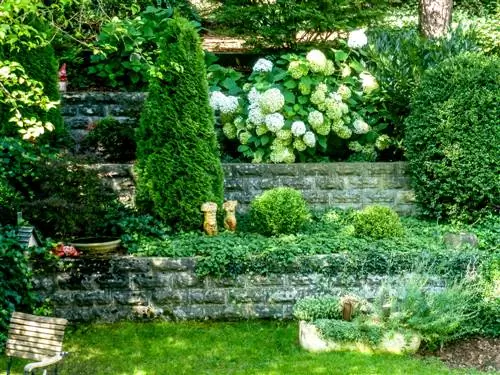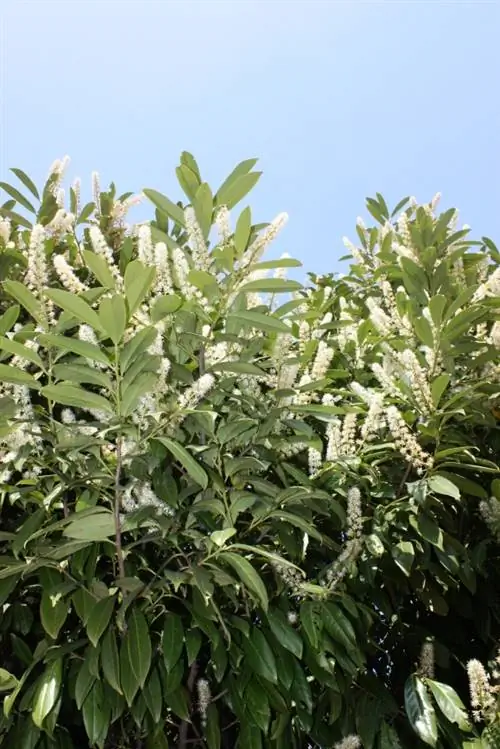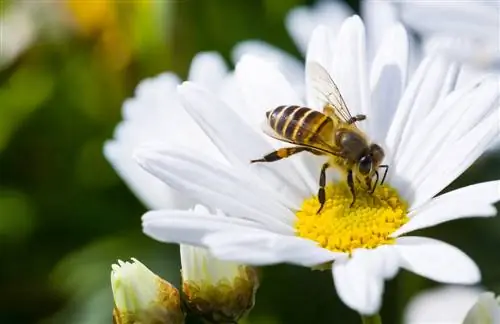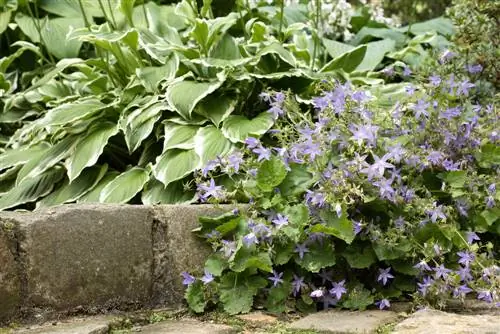- Author admin [email protected].
- Public 2023-12-16 16:46.
- Last modified 2025-06-01 06:02.
If lush, dense permanent green is required, cherry laurel should not be missing. The Thuja can also easily keep up in terms of opacity. Deciding on a plant may be difficult for some gardeners. But does it even have to be felled? Don't both go hand in hand?

Can you mix thuja and cherry laurel as hedge plants?
Thuja and cherry laurel can be mixed if they share a partially shaded location. Both require similar care but grow differently. Pay attention to the arrangement and planting distance to create a harmonious mixed hedge.
Can thuja and cherry laurel be mixed?
If there is a thuja or a cherry laurel (Prunus laurocerasus) as a solitary plant in the garden, the immediate vicinity does not play such an important role, as long as each plant receives ideal care and enough space to develop. It looks different if they are intended to form an evergreen, opaque privacy screen as a mixed hedge. In this case:Yes,Thuja and cherry laurel can coexist closely as hedge plants. But whether this duo is really a successful mix should not primarily be decided by visual aspects.
Can the location and care requirements of the two be combined?
A necessary question because the mixed hedge has to last for a long time. In addition, grown thuja are difficult to pull out because of the numerous, sometimes intertwined, lateral roots. A comparison of their requirements reveals similarities, but also differences:
- Thuja likes sunny and partially shaded places
- Laurel cherry is more of a shade plant
- Thuja tolerates more wind and cold
- Cherry laurel survives drought better
- Coniferous fertilizer (€8.00 on Amazon) is suitable for both fertilizers
- Both are fast-growing and tolerate cutting well
Conclusion: If a partially shaded location is given, the subtle differences areno obstacle to a mixture!
Thuja and cherry laurel - what needs to be taken into account when mixing?
The tree of life grows tall and slender, almost like a pillar. Cherry laurel tends to have a wide, spherical crown. The tree of life has fine, soft scaled leaves, the laurel cherry has large, leathery leaves. Optimize thearrangement of the planting sites so that these contrasts form a visually harmonious hedge. Also important:
- Spring planting
- Planting distance 40-50 cm
- Align the border distance according to the growth width of the cherry laurel
Attention: A thuja can be quickly shaped with an electric hedge trimmer. In cherry laurel, this frays the leaves, causing them to dry unsightly. It's better to cut it manually!
Why do conservationists advise against thuja and cherry laurel?
Thuja and cherry laurel are not popular with environmentalists because they offerhardly any ecological benefit. The reason is that these immigrant trees have little to offer the local bird world. Their berries are either poisonous or inedible, and the dense leaves prevent nesting. Bumblebees and bees as “habitual insects” avoid the unknown flowers of the cherry laurel.
Tip
Bird-friendly alternative for the “Thuja & Cherry Laurel” mix
Nobody has to be sad about having to do without thuja and cherry laurel. There are wonderful local alternatives. For example, the evergreen yew or the richly flowering and fruit-bearing rowanberry. In general, native trees are the better choice because our wildlife has been able to adapt to them over the centuries.






